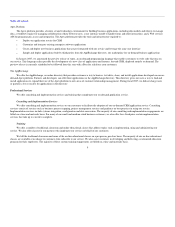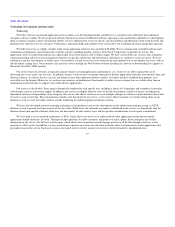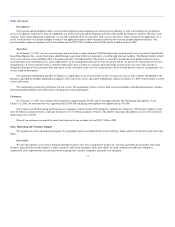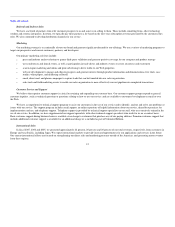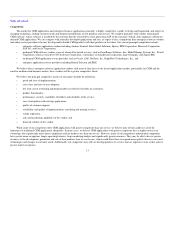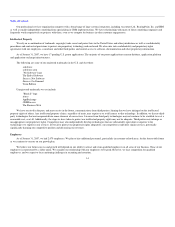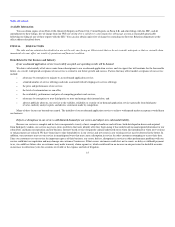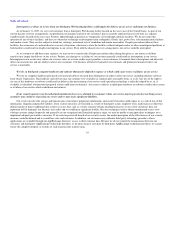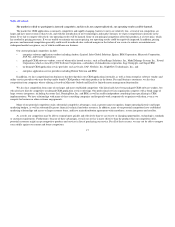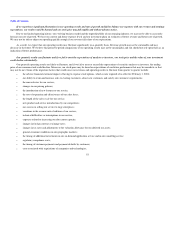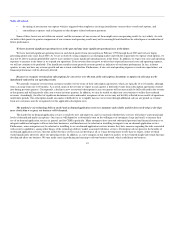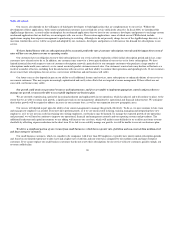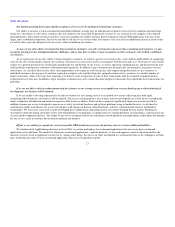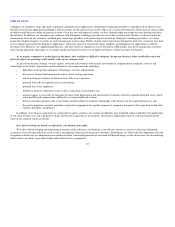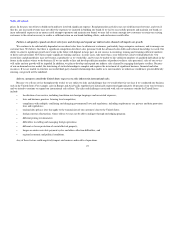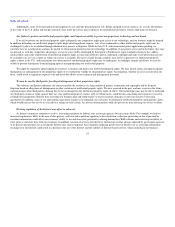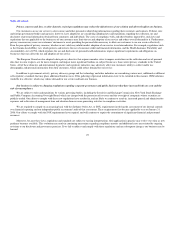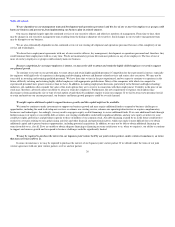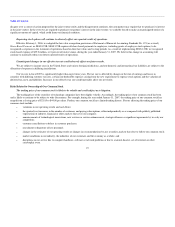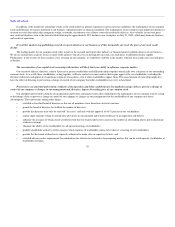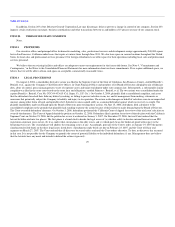Salesforce.com 2006 Annual Report Download - page 22
Download and view the complete annual report
Please find page 22 of the 2006 Salesforce.com annual report below. You can navigate through the pages in the report by either clicking on the pages listed below, or by using the keyword search tool below to find specific information within the annual report.
Table of Contents
• the timing of non-income tax expense which is triggered when employees in foreign jurisdictions exercise their vested stock options; and
• extraordinary expenses such as litigation or other dispute-related settlement payments.
Some of these factors are not within our control, and the occurrence of one or more of them might cause our operating results to vary widely. As such,
we believe that quarter-to-quarter comparisons of our revenues and operating results may not be meaningful and should not be relied upon as an indication of
future performance.
We have incurred significant operating losses in the past and may incur significant operating losses in the future.
We have incurred significant operating losses in each fiscal quarter from our inception in February 1999 through fiscal 2003 and we have begun
generating profits only since fiscal 2003. As we are a relatively young company in an emerging market and with the requirement to expense stock options, we
may not be able to maintain profitability and we may continue to incur significant operating losses in the future. In addition, we expect our costs and operating
expenses to increase in the future as we expand our operations. If our revenue does not grow to offset these expected increased costs and operating expenses,
we will not continue to be profitable. You should not consider recent quarterly revenue growth as indicative of our future performance. In fact, in future
quarters we may not have any revenue growth and our revenue could decline. Furthermore, if our costs and operating expenses exceed our expectations, our
financial performance will be adversely affected.
Because we recognize revenue from subscriptions for our service over the term of the subscription, downturns or upturns in sales may not be
immediately reflected in our operating results.
We generally recognize revenue from customers ratably over the terms of their subscription agreements, which are typically 12 to 24 months, although
terms can range from one to 60 months. As a result, much of the revenue we report in each quarter is deferred revenue from subscription agreements entered
into during previous quarters. Consequently, a decline in new or renewed subscriptions in any one quarter will not necessarily be fully reflected in the revenue
in that quarter and will negatively affect our revenue in future quarters. In addition, we may be unable to adjust our cost structure to reflect these reduced
revenues. Accordingly, the effect of significant downturns in sales and market acceptance of our service may not be fully reflected in our results of operations
until future periods. Our subscription model also makes it difficult for us to rapidly increase our revenue through additional sales in any period, as revenue
from new customers must be recognized over the applicable subscription term.
The market for our technology delivery model and on-demand application services is immature and volatile, and if it does not develop or develops
more slowly than we expect, our business will be harmed.
The market for on-demand application services is relatively new and unproven, and it is uncertain whether these services will achieve and sustain high
levels of demand and market acceptance. Our success will depend to a substantial extent on the willingness of enterprises, large and small, to increase their
use of on-demand application services in general, and for CRM in particular. Many enterprises have invested substantial personnel and financial resources to
integrate traditional enterprise software into their businesses, and therefore may be reluctant or unwilling to migrate to an on-demand application service.
Furthermore, some enterprises may be reluctant or unwilling to use on-demand application services because they have concerns regarding the risks associated
with security capabilities, among other things, of the technology delivery model associated with these services. If enterprises do not perceive the benefits of
on-demand application services, then the market for these services may not develop at all, or it may develop more slowly than we expect, either of which
would significantly adversely affect our operating results. In addition, as a new company in this unproven market, we have limited insight into trends that may
develop and affect our business. We may make errors in predicting and reacting to relevant business trends, which could harm our business.
19


